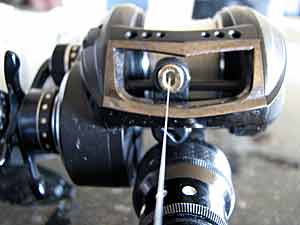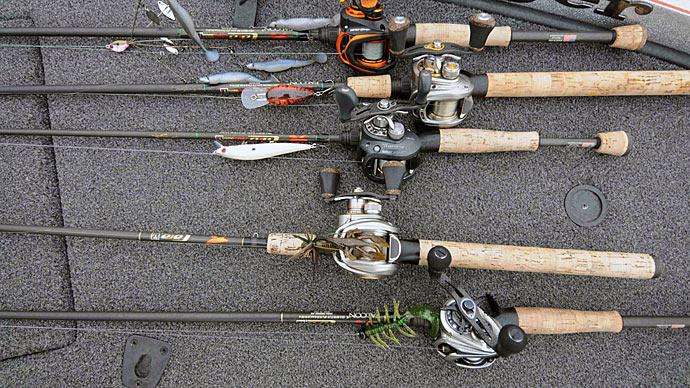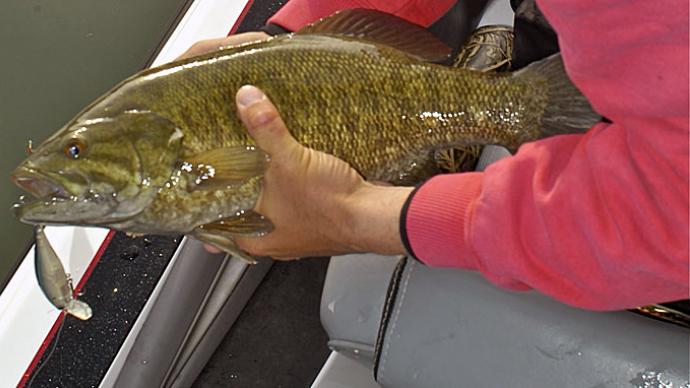
Bass Fishing is like a 1000-piece puzzle, especially as it relates to banging big fish. The person at the end of the day having the most pieces of the puzzle together usually wins. All your actions, activities, and thoughts when fishing places you in a position of advantage or disadvantage. So, coloring your line for stealth and success is a proven method that gives you the advantage and allows you to add another positive piece to your fishing puzzle.
Bass have superior eyesight, and when you couple that with their feel/hear and smell/taste sensors, the coloring of your line then becomes a critical function of your presentation. Add to that the distinctions between a five-pound, a ten-pound, and even a fifteen-pound bass, and line coloration become critical.
The obvious question is, "Why do we want to color our line?" Simply stated, a colored line gives fishin' enthusiasts the advantage because no matter what the water quality is, such as muddy or clear, the color breaks offset the bass's ability to track and see the line. Here is an example of this "trick" you can play on yourself. Take whatever line you have and color the first twenty feet in one-foot brown, blue, and green sections. Tie a weight at the end of your line and go to your local swimming pool. Make a cast and watch the line. Of course, you will be able to see the brown part. The blue, you might even be able to see that. Yet the green becomes very faded and almost unseen. Now, this test was performed in a swimming pool. What if you were to try this test in actual conditions? In a clear lake or even murky conditions, the advantage swings back to the fishing enthusiasts with colored line breaks.
Here are the tools you will need and how to prepare them. First, you need colored pens. I recommend that you use the Marks-A-Lot pens. They last a long time and work effortlessly. Secondly, take a razor blade and make a small incision at the very tip of the pen. This allows you to place the line within the incision to apply your color.
In most applications, you can paint your lines in one to three-foot sections, which models the Triple Fish line I use. Again, brown, blue, or green. If your line is already manufactured with one of these colors, you will only have to paint on two colors.
In past years, I have wondered if the final three feet or so as you tie off a knot to your hook would make a difference. As a result, I have consciously tried to tie the knot to the green or blue side and avoid the brown. I am curious if this has made any difference through the years, but I have, on purpose, tied off to the green or blue part. I have gone as far as painting my hooks when faced with a lake with very clear water.
Now, one last thing. I asked my good fishing buddy and friend John Deckard to give me suggestions about coloring. John and I make a great fishing team because we are good friends but opposite in our personalities. I'm the "get it done" guy, and John is more the "scientific guy" or analyzer type. So when I presented this question to John, I figured I would get some response like "Contact Los Alamos Labs to get exact color types that will match the top five water clarity of any lake in America," or "Have I contacted a paint laboratory somewhere to find out how many casts it will take for the ink to fall off the line?" Well, the first two sentences caught me off guard then he rolled right back to his true form. This is what he said:
John Deckard (Mr. Scientist): "I like to smear. When we were children, we finger painted as a basic way of combining and making new colors."
"I paint one side according to the water colors, the other to the bottom color, and I smear them on overlapping sides of the line for the first 1/2 of the casting distance. After that, smear both sides and overlap generously. My favorites are brown, red, purple, black, and blue. Mixed, smeared, and light one on each side and alternating allows little linear definition or linear distinctions at any depth."
"On the top half, I continue using lighter and less color, still smearing, but these are broken by 3-foot demarcations or breaks of very dark circular bands to block transmitted light traveling down the line from the surface- similar to optical fiber, only less efficient. Efficient enough to otherwise make your line glow at 10 feet."
"Have fun, be a kid again, and smear. It makes a difference, and as you learn to alter it to each level of clarity, you add a true addition to your arsenal."
I read this and wondered where John comes up with this stuff. Okay, John, I like to act like a kid, yet you'll have to explain some of that stuff to me in terms that I can understand!
In closing, whether you choose to use my straightforward method or try John's more scientific approach, coloring your line will add more points to the 1000-piece puzzle, plus it will help you move closer to a thriving fishing outing!
Chuck Bauer is a noted Big Bass Specialist who has been recognized many times by various organizations, including Bassin' Magazine, Texas Fish & Game, North American Fisherman Magazine, Outdoor Life, Texas Hunting and Fishing News, The Dallas Morning News, and Texas Outdoor Times Magazine. Chuck is a Professional Member of the National Speakers Association, and he is on Pro Staff for Kick-n-Bass.




